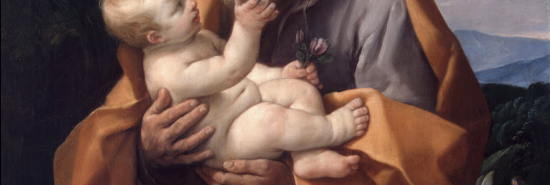
Put away the shamrocks; it’s time for Saint Joseph’s Day
Christopher Tremoglie
Video Embed
Many people associate March with the color green, soda bread, Irish potatoes, and shamrocks as part of the festivities and customs in observance of Saint Patrick’s Day on March 17. Parades are held throughout the country, and Chicago dyes its green river. However, another holiday of equal importance, one that many need to familiarize themselves with, occurs two days later, on March 19. La Festa di San Giuseppe, or Saint Joseph’s Day, celebrates the life of the husband of the Virgin Mary and the man who raised Jesus Christ and is a popular day in the Italian American community.
“It is logical that St. Patrick’s day enjoys a wider reputation than St. Joseph’s day as almost 10% of the U.S. population can claim Irish descent, and Italian-Americans have historically been more focused on celebrating Columbus day. But that doesn’t diminish the significance of St. Joseph’s day among the conoscenti,” Robert Allegrini, president of the National Italian American Foundation, told me. “Actually, the timing of these two Catholic Saint days works out well. After a day when many are known to celebrate with a few libations, who wouldn’t want to recover up with some delicious zeppole and the splendor of a St. Joseph’s table?”
ENDLESS F-WORDS HAVE COME TO DOMINATE STREAMING MEDIA

Allegrini is talking about some of St. Joseph’s Day’s best customs. These include attending mass, wearing red, creating the aforementioned St. Joseph’s Day table comprising various foods, and eating fava beans and delicious pastries such as sfingi and the zeppole.
The fava bean comes from the holiday’s Sicilian origins as St. Joseph is the patron saint of Sicily. According to legend, a major drought in Sicily occurred during the Middle Ages, and the fava bean was the only nourishment to save Sicilians. On the brink of starvation, the people prayed to their patron saint to bring them rain. When their prayers were answered, a large feast was held in honor of St. Joseph.
“In our community, St. Joseph’s Day is a very important feast day, particularly to our Sicilian American brethren who have long venerated the saint as the patron of the island,” Allegrini said.
Because the fava bean was the crop that saved Sicily from starvation, it became a traditional St. Joseph’s Day food. And, as a result of its prominence in the lore of their survival, Sicilians use fava beans to make a paste for a dish, pasta with the maccu.
In the United States, New Orleans has one of the largest St. Joseph’s Day celebrations in the nation. While typically associated with Mardi Gras, it also has a large St. Joseph’s Day parade in honor of its sizable Sicilian population. The city was a major port of entry for Sicilian immigrants who legally entered the country in the 19th and 20th centuries.
“In New Orleans, where there is both a large Irish and a large Sicilian population, they actually have a parade which celebrates both holidays, and this seems to be a good solution,” Allegrini said. “After all, we Italian Americans are in no way opposed to also celebrating St. Patrick, who was born to Roman citizens and therefore was a son of our great empire.”
This year’s parade is on Saturday, March 25, in the French Quarter. The festivities begin with “pizza, wine, and Italian music, before the marchers who are dressed in black tuxedos march.” People join the celebration, exchanging “salutations, handing out silk flowers and fava beans,” and “dancing and singing through the streets.”

The festivities include many imported from the old country – including one about taking a lemon from the St. Joseph’s Day table. This practice was predicated on the belief that any woman who took such a lemon would increase her chances of finding a husband.
CLICK HERE TO READ MORE FROM THE WASHINGTON EXAMINER
Marriage rituals aside, perhaps the best part of Saint Joseph’s Day is the zeppole. This delicacy has become a staple of the day’s celebration. It is a deep-fried dough ball, usually filled with a chocolate or vanilla pastry cream (some places have other flavors) and topped with powdered sugar and a cherry. If you are an unfortunate soul who has not enjoyed this deliciousness, you must go to your nearest Italian bakery as soon as possible. (St Joseph says calories don’t count on this day.)
If anyone can be Irish on St. Patrick’s Day, anyone can honor St. Joseph on March 19. So, this year, join the festivities. Don something red, eat some fava beans, grab a delicious zeppole (or two or three) from your nearest Italian bakery, and honor the saint who ended a drought, saved a country, and raised the Messiah. So this St. Joseph’s Day, join the tradition.
